India’s Road to Glory: ICC Women’s World Cup Final 2025
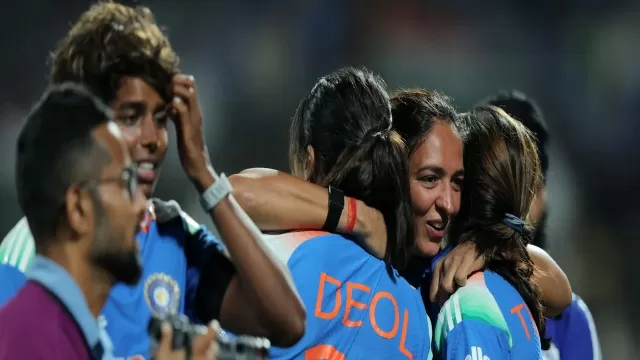
India’s campaign at the ICC Women’s Cricket World Cup 2025 has been a stirring blend of high drama, character, and comeback. What began as a confident march in the group stages hit a mid-tournament rough patch of razor-thin defeats, only for Harmanpreet Kaur’s side to regroup and surge back with some of the most memorable performances of the tournament. From dominant bowling displays to match-winning batting partnerships, India’s journey to the final has been defined by resilience and a refusal to be defined by setbacks.
Across venues and conditions, the Women in Blue demonstrated adaptability — rotating bowlers, promoting form batters, and trusting youngsters when the moment demanded it. The road to the final is not just a sequence of match results; it’s a story of tactical adjustments, leadership decisions, and individual brilliance woven into a collective belief that one more win would be enough to lift India to its first-ever ODI World Cup title.
Below, we break down India’s road to the final in detail — the broadcast setup that brought these games to fans worldwide, the match-by-match storylines from the group stage, and how the team turned pressure into momentum in the knockout stage to reach the title clash against South Africa.
Broadcast Details for the ICC Women’s Cricket World Cup
The ICC Women’s Cricket World Cup 2025 enjoyed wide global distribution, making India’s campaign accessible to millions. In India, the primary broadcasters carried all matches live with multi-language commentary and pre- and post-match analysis, while streaming platforms provided simulcast options and on-demand highlights. International partners ensured coverage across regions — Europe, Oceania, Africa and the Americas — so fans everywhere could follow India’s dramatic swings in form and their eventual march to the final.
Comprehensive broadcast packages included in-depth tactical breakdowns, player mic-ups on select fixtures, and feature segments that profiled rising stars. These elements amplified the emotional impact of India’s comeback arc and allowed viewers to appreciate not only the results but the strategic nuances behind the team’s decisions and performances.
Defeated Sri Lanka by 59 Runs (DLS Method)
India made an emphatic start to the tournament against Sri Lanka. A composed batting effort led by Deepti Sharma and Amanjot Kaur produced a competitive total of 269/8. Contributions from Harleen Deol and Pratika Rawal in the top order ensured a steady platform, while India’s bowlers executed their plans when it mattered. Deepti Sharma’s three-wicket haul (3/54) exemplified an all-round performance that swung the match in India’s favour.
Sri Lanka began their chase positively but lost momentum as India’s disciplined bowling attack applied pressure through sustained lines and tight fielding. The match was curtailed by rain and decided by the Duckworth-Lewis-Stern method, with India eventually sealing a 59-run victory — a confident opener that set expectations high.
Defeated Pakistan by 88 Runs
In their next fixture, India extended their early momentum with a comprehensive win over Pakistan. India posted 247 after a middle-order rebuild ensured the scoreboard stayed healthy. Harleen Deol’s measured 46 and several useful cameos kept the innings ticking. The chase fell apart for Pakistan as India’s bowlers struck early, reducing them to 26/3 and never allowing recovery.
Kranti Gaud and Deepti Sharma led the bowling charge with incisive spells (3/20 and 3/45 respectively), while Sneh Rana chipped in with two crucial wickets. The collective bowling effort skittled Pakistan well short, and the comfortable margin of victory reinforced India’s early tournament dominance.
Lost to South Africa by Three Wickets
The first hint of trouble arrived in a pulsating encounter with South Africa. India posted a strong total thanks to a near-century from Richa Ghosh (94) and late contributions from Sneh Rana. Despite reducing the visitors to 81/5, India could not sustain bowling pressure through the death overs. Laura Wolvaardt and Chloe Tryon engineered a comeback partnership that steadied South Africa, and Nadine de Klerk’s composed finish sealed a narrow three-wicket defeat for India.
This loss highlighted the fine margins at this level: India had bowling success but lacked the killer finishing touches in the tail end of the chase. Rather than puncture confidence, the match provided tactical lessons — about managing momentum shifts and closing out tight contests.
Lost to Australia by Three Wickets
India’s second defeat, against a relentless Australian side, was a spectacle of top-class cricket. India amassed 330 with Smriti Mandhana (80) and Pratika Rawal (75) forging a 150-run partnership that set a formidable platform. In reply, Alyssa Healy produced one of the tournament’s standout innings — a dominant 142 that powered Australia to a successful chase. Despite India taking late wickets, the Aussies crossed the line in the final moments.
The game was a lesson in handling extreme pressure; India’s batting showed depth and flair, but the opposition’s extraordinary response demonstrated how small lapses in execution can be punished rapidly by world-class opponents. Still, competing at such intensity against top teams underscored India’s capacity to challenge the very best.
Lost to England by Four Runs
A heartbreaker against England left India reeling but also revealed their enormous character. England posted 288/8, anchored by Heather Knight’s century. Deepti Sharma starred with the ball (4/51), but India’s batting reply fell agonizingly short. Smriti Mandhana (88), Harmanpreet Kaur (70) and Deepti (50) stitched strong partnerships that had India well placed, but a late collapse turned the tide. India needed 22 off the final two overs and could not get over the line, losing by just four runs.
This match epitomized the emotional volatility of the tournament: India were inches away from victory on multiple occasions and learned the brutal reality of ODI margins. Instead of capitulating, the team used the defeat as motivation for the crucial run-in.
Defeated New Zealand by 53 Runs (DLS Method)
Facing a must-win scenario against New Zealand, India produced their most commanding batting display of the tournament. Smriti Mandhana and Pratika Rawal both scored centuries, while Jemimah Rodrigues provided an unbeaten 76. India posted a monumental 340/3 in a rain-affected match, and the bowlers executed their plans impeccably to secure a 53-run DLS victory. The win was decisive and professional — a message that India were far from finished.
The triumph showcased India’s ability to respond under pressure with a clinical blend of batting firepower and disciplined bowling, reclaiming momentum at an ideal point in the tournament.
No Result vs Bangladesh
Rain intervened in India’s final group-stage match against Bangladesh, resulting in a no-result. Before the washout, India had tightened the screws with disciplined bowling, restricting Bangladesh to 119/9 in 27 overs. Chasing a revised target, India were well placed at 57/0 in 8.4 overs when the weather forced abandonment. Though the contest yielded no points swing, India’s performance in the truncated match reaffirmed their control across departments.
The shared points kept India comfortably in contention heading into the knockout stages, providing extra rest and reflection time to fine-tune strategies for the semi-final challenge.
Defeated Australia by Five Wickets in Semi-Final
The semi-final produced one of the most astonishing comeback victories in World Cup knockout history. Chasing a daunting 339, India were in early trouble at 59/2. Into the breach stepped Jemimah Rodrigues and Harmanpreet Kaur, who compiled a breathtaking 150-run partnership that shifted the match decisively. Jemimah’s unbeaten 127 and Harmanpreet’s powerful 89 anchored the chase as India overcame a massive total with a few balls to spare.
The successful run chase was not only the highest-ever in a World Cup knockout game but also a statement of intent — India had the temperament, the skillset, and the nerves to overturn history. The victory propelled them into the final, where one more win would complete an extraordinary campaign.
The Road Ahead: Final vs South Africa
As India prepared for the title clash against South Africa, the narrative was clear: a team battle-tested by adversity, armed with tactical variations, and brimming with belief. The tournament had produced standout performers across the lineup — from the dependable top order to match-winning all-rounders and a varied bowling attack capable of taking wickets in all phases.
The final would be the ultimate test of composure and execution. For India, it was an opportunity to turn resilience into reward and to etch a historic first ODI World Cup title. For the nation’s fans, it was a chance to celebrate a team that had redefined what it meant to fight back on the sport's biggest stage.
Conclusion
India’s road to the ICC Women’s Cricket World Cup final was a journey of peaks and troughs — a narrative rich with thrilling highs, painful near-misses, and an unforgettable resurrection in the knockout stage. Harmanpreet Kaur’s leadership, combined with pivotal innings from players like Jemimah Rodrigues, Smriti Mandhana, and Richa Ghosh, alongside crucial contributions from bowlers such as Deepti Sharma and Kranti Gaud, formed the backbone of this campaign.
Ultimately, the story is about more than results; it’s about growth, adaptation, and collective belief. As the Women in Blue prepared for the final showdown with South Africa, they carried with them the lessons of every close finish and every decisive victory — ready to write the final chapter of a World Cup journey that captured the imagination of cricket fans across the globe.
Also Read: Cristiano Ronaldo Jr. Shines on Portugal U16 Debut Win
Disclaimer
Possible11 is a sports news platform that provides live scores, player statistics, and tournament updates for informational and educational purposes only. We comply with the Online Gaming Bill, 2025 (India) and do not promote or engage with fantasy sports, betting, or real-money gaming platforms. All content is intended solely to enhance the sports experience. Possible11 is not affiliated with any fantasy or gambling applications and is not responsible for any financial gains or losses incurred on external platforms.


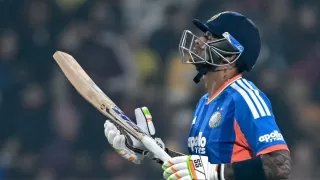
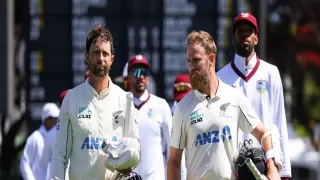

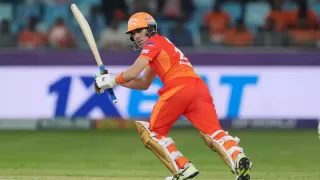


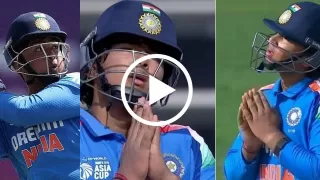

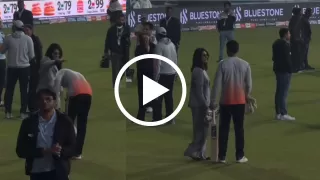
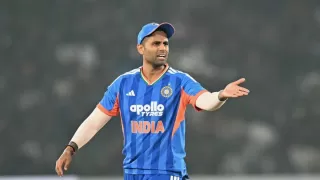
Give Your Feedback